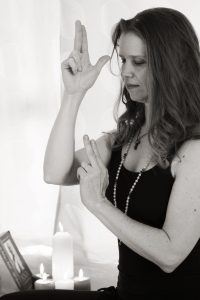“I experienced the great disequilibrium of those months as violent changes imposed upon me from the outside, against my will.” – Ulrich Baer describing the months after Sept. 11, 2001 as a New Yorker
 Consider the Nervous system. It is the great integrator of information, internal and external, for our BodyMind. When we speak of ‘body’ or of ‘mind’ we are speaking of the same entity.
Consider the Nervous system. It is the great integrator of information, internal and external, for our BodyMind. When we speak of ‘body’ or of ‘mind’ we are speaking of the same entity.
We live in a world guided by the technology of computers, so it is a useful analogy to support connecting out relationship with the nervous system. In this analogy, the body can be considered ‘hardware’, the physical container for information. The nervous system is like the ‘software’, the information necessary to make the computer body functional.
There is a third component called ‘firmware’. In the computer world, firmware is a preprogrammed piece of the computer system – almost like a combination of hardware and software. The firmware cannot be as easily altered as software, which can be rewritten with new code. Firmware is hardwired in, some changes and upgrades are possible, but it constitutes a fundamental aspect of the system.
Aspects of our nervous system are the firmware of the BodyMind. It is the inherited or formed in early childhood (epigenetic predisposition) and changes very little in our lifetime. Certain traumatic events also have the capacity to shift our neurological firmware. One of the important aspects of the therapeutic and trauma-informed approaches to Yoga practice is to consider and acknowledge this predisposition and our relationship to it (it shapes our perception, so it must not be ignored).
Firmware vs. Software
The hardwiring is not just in the formation of the brain, but also in the genes inherited from our ancestors, which guide the formation and evolution of all of our systems. There have been extensive studies that look at behaviors correlated with common ancestry that have found interesting insights into behavior.
Some great examples: (from studies referenced in “Behave: The Biology of Humans at our Best and Worst” by Robert Sapolsky)
- Those descended from people who lived through the possibilities of food scarcity from theft (such as nomads who depended upon animals) are more likely to be more individualistic and bound to ideas of ‘honor’. Whereas those descended from people whose lives depended upon communal action and responsibility (like rice farmers of China) continue to be more connected to the common good in their values and actions.
- If your ancestors lived in the desert, you are more likely to be monotheistic. If your ancestors were from rain forests, polytheism is more likely.
- Mothers from collectivist cultures sing more softly to their newborns compared to new mothers from more individualistic cultures. There are also significant differences in the time of physical contact or responses to cries, etc.
These cultural difference from hundreds of years ago have shaped how our genes and brain developed from the start. The lineage of our genes becomes culture; culture reinforces the genetic programming, and this becomes the building blocks of our nervous system. In the Yoga and Buddhist traditions, we call this Samskaras. It is the ocean on which we must sail. Without understanding the topography of the waves, the winds, it becomes challenging to stay afloat.
We cannot consider working with the software of our nervous system without understanding how we are hardwired. In the Viniyoga tradition, this is a fundamental concept expressed often in simpler terms. We must consider the ‘constitution’ of each person – not only the physical form but the neurological framework on which they function.
Behavioral science has demonstrated, again and again, that we don’t usually make rational decisions. Rather, We rationalize our intuitive decisions – meaning that decisions are being made based on our epigenetic predisposition rather than a logical analysis of the situation. We are left to make sense of that decision afterwards – how does this impact who we are if the impact of personal choice is much smaller than we assume?
The modern science is slowly turning towards how to alter the epigenetic predisposition of our biology, but ancient teachings are already pointing us in this direction.
Neuroplasticity and Rewriting the Code
The ancient teachings of Yoga do not give a definitive answer on the question of free-will but does ask us to acknowledge our inheritance as part of ourselves and gives us tools to perform upgrades. Knowing about the predisposition in our BodyMind is important. However some of the same same qualities of our neurological system that created our hardwiring can also be a tremendous source of healing, namely neuroplasticity. This is, simply, the quality of our brains to physically change in response to input. The malleability of our brains, and hence, our minds does not end with early childhood.
A primary idea that exists in traditions like Yoga is ‘practice.’ The word has come to mean different things for different traditions, but at its core, it is a reminder to embody the ideas of the traditions, repeatedly, over a long period of time. This is the heart of neuroplasticity. Just like your behavior can be determined by the configuration of your neurological pathways (inherited or developed), changing behavior can have an impact on your neurological pathways. To ‘practice’ anything is to remake neuropathways.
Once we want to consider rewriting our programming, which is our habitual responses to the world around us, we can consider the array of tools in the Yoga system. Fundamentally, many traditions like yoga point to something like our ‘True Nature’, an idea that there is an aspect of us that is behind our programming, an aspect of ourselves in neurological balance, attuned to nature and not bound by our genetic and developmental predispositions.
The two of the MANY tools that address some of these epigenetic predisposition in the Yoga tradition are pausing and breathing….… such simple ideas.
References:
“They’re made of meat” by Terry Bisson. (never forget that we are a haunted pile of meat filled with electricity)
“Losing Touch: A man without his Body” by Jonathan Cole – a story about Ian Waterman, the man who lost his proprioception nerves and regained the ability to move in the world through retraining.
